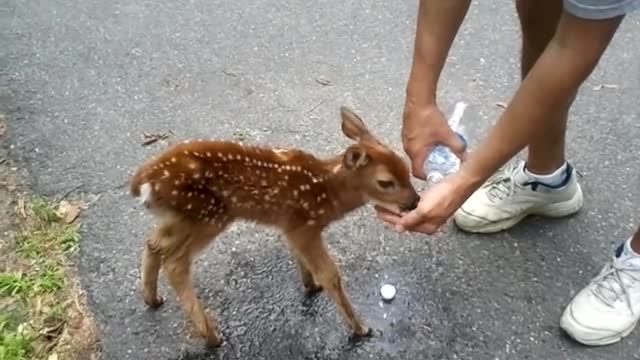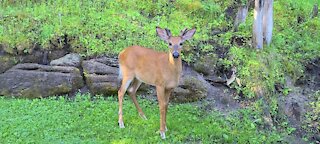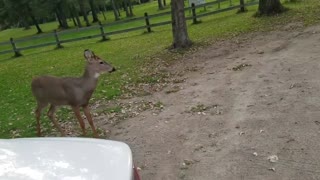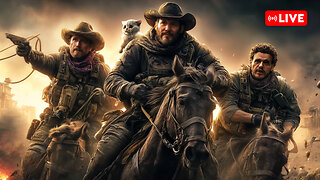Premium Only Content

Friendly Baby Deer
Most first-year does will have one fawn each year, but twins or triplets are typically seen thereafter.
Until they are strong enough to keep up with their mothers, deer fawns are left alone while their mothers go off to feed. Mother deer will stay away from the fawns to avoid leading predators to their young. Does return at dawn and dusk to feed and/or move their young.
Fawns are typically left in an area with tall grass or bushes, but sometimes they are left in more open areas, including backyards. Older deer fawn may wander short distances.
When moving a fawn, it’s not unusual for the fawn to follow you as you leave. To prevent the fawn from following you, place the fawn facing away from the direction in which you plan to leave so it cannot watch you.
Tap the fawn once or twice firmly between the shoulder blades (this mimics how the mother taps the fawn with her nose to communicate “stay here and wait until I come back.”)
Quickly leave the area. Do not linger. The fawn may stand up and take a few steps to follow. Keep going and the fawn should lie back down. If possible, you can monitor from afar with binoculars.
Spotted white-tailed deer fawns offer one of the most appealing sights in nature. Fawns typically appear walking closely to their protective mother or bounding across a field with seemingly unlimited energy. However, in May and June many fawns are found curled up in the field or forest alone, with no vigilant doe in sight.
The male deer (buck) plays no role in raising fawns. After the female deer (doe) gives birth to one or two fawns and nurses them, she leads them into secluded habitat within her familiar home range. Twin fawns can be separated by up to 200 feet. The doe then leaves them alone for extended periods of time. The doe returns periodically to nurse them and to relocate them to new secluded habitat. This pattern will continue for up to 3 weeks. By this time the fawns are mature enough to keep up with their mother and able to race out of real or perceived danger.
Sometimes fawns are injured by pets, vehicles or farming equipment. Injured fawns should only receive care from a licensed Maryland wildlife rehabilitator who is authorized to handle fawns.
Fawn Rehabilitators will coordinate the transport and care of the fawn. You can get advice on what to do if you encounter an injured fawn, from a fawn rehabilitator. Click here for contact information for wildlife rehabilitators who may be able to assist with fawn rehabilitatio
-
 1:38
1:38
Georgiahightower
3 years agoFriendly Deer
18 -
 1:42
1:42
Deer In Nature
4 years ago $2.60 earnedSuper friendly mother & baby deer visit human friend
9.7K18 -
 3:19
3:19
BOSSMAN13
4 years agofriendly deer loves humans
51 -
 1:44
1:44
Deer In Nature
4 years ago $0.12 earnedWild deer incredibly friendly
2034 -
 10:55
10:55
ViralHog
3 years ago $0.04 earnedExtra Friendly Deer Plays With Pup
3261 -
 1:20:42
1:20:42
The Connect: With Johnny Mitchell
5 days ago $0.26 earnedThe Truth Behind The U.S. Invasion Of Venezuela: Ed Calderon Exposes American Regime Change Secrets
2.99K3 -
 LIVE
LIVE
Lofi Girl
3 years agolofi hip hop radio 📚 - beats to relax/study to
272 watching -
 21:39
21:39
TruthStream with Joe and Scott
2 days agoJoe, Scott and Lewis, Censorship and the Nov 8th event in Carlsbad California!
3.36K1 -
 22:47
22:47
The Pascal Show
1 day ago $0.15 earnedTHEY’RE HIDING EVIDENCE?! Candace Owens EXPOSES Foreign Connection In Charlie Kirk Shooting
31.2K34 -
 7:44:50
7:44:50
SpartakusLIVE
9 hours agoThe Duke of Nuke CONQUERS Arc Raiders
163K2